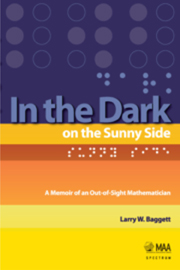Book contents
- Frontmatter
- Contents
- To Christy, my light
- Prologue
- 1 Uncle Al's Truss
- 2 A Quantum Moment
- 3 Louis and the Problem of Sixty-Three
- 4 A Cane Mutiny
- 5 Pinocchio Becomes a Real Boy
- 6 Aunt Mildred and the Circle of Fifths
- 7 Scarlet Ribbons
- 8 Dauntless Courage
- 9 The Age of Enlightenment
- 10 Baggett v. Bullitt, and All That Jazz
- 11 Publish or Perish, My Best Work
- 12 The Renaissance
- 13 “So How'd That All Work Out for You?”
- Author's Notes
- Acknowledgments
- Index
3 - Louis and the Problem of Sixty-Three
from To Christy, my light
- Frontmatter
- Contents
- To Christy, my light
- Prologue
- 1 Uncle Al's Truss
- 2 A Quantum Moment
- 3 Louis and the Problem of Sixty-Three
- 4 A Cane Mutiny
- 5 Pinocchio Becomes a Real Boy
- 6 Aunt Mildred and the Circle of Fifths
- 7 Scarlet Ribbons
- 8 Dauntless Courage
- 9 The Age of Enlightenment
- 10 Baggett v. Bullitt, and All That Jazz
- 11 Publish or Perish, My Best Work
- 12 The Renaissance
- 13 “So How'd That All Work Out for You?”
- Author's Notes
- Acknowledgments
- Index
Summary
What possibly better luck could I have had, being newly blind and ready for first grade, than to be plunked down in Boston, Massachusetts, in January of 1945, so that I could be enrolled at the Perkins Institute for the Blind that fall? At that time, Perkins was the premier school for the blind anywhere in the world. Miraculously for me, I was able to enjoy my first two years of school there, and, of course, that's where I met Helen Keller. Well, not really, but in an important sense I did encounter her spirit and influence there, for it was the persona of Helen Keller that best represented the Perkins School throughout the whole of the twentieth century.
For obvious reasons, my mother had told me much about Helen Keller, the brilliant deaf and blind girl who had become a symbol to the whole world of the possibility of overcoming adversity. William Gibson's play, The Miracle Worker, tells the story of how a young Annie Sullivan took on what seemed to be the impossible job of tutoring the deaf, dumb, and blind toddler, Helen. Amazingly, almost miraculously, Annie was able to contact this little person, two of whose senses weren't working at all, and employing a language based on finger and hand movements, she got Helen's attention, showed her how to respond in the same manner, and, against all predictions, taught Helen to read, write, and, most extraordinary of all, speak.
- Type
- Chapter
- Information
- In the Dark on the Sunny SideA Memoir of an Out-of-Sight Mathematician, pp. 31 - 48Publisher: Mathematical Association of AmericaPrint publication year: 2012



